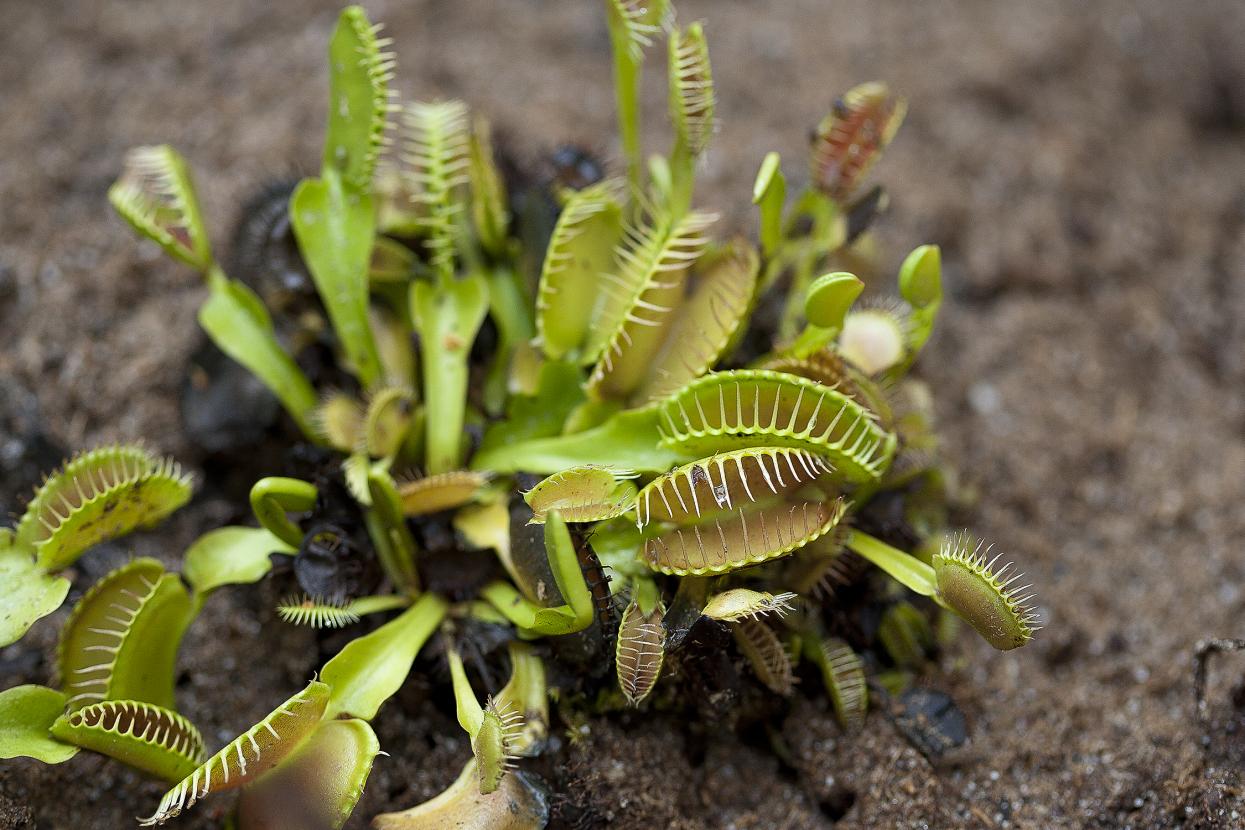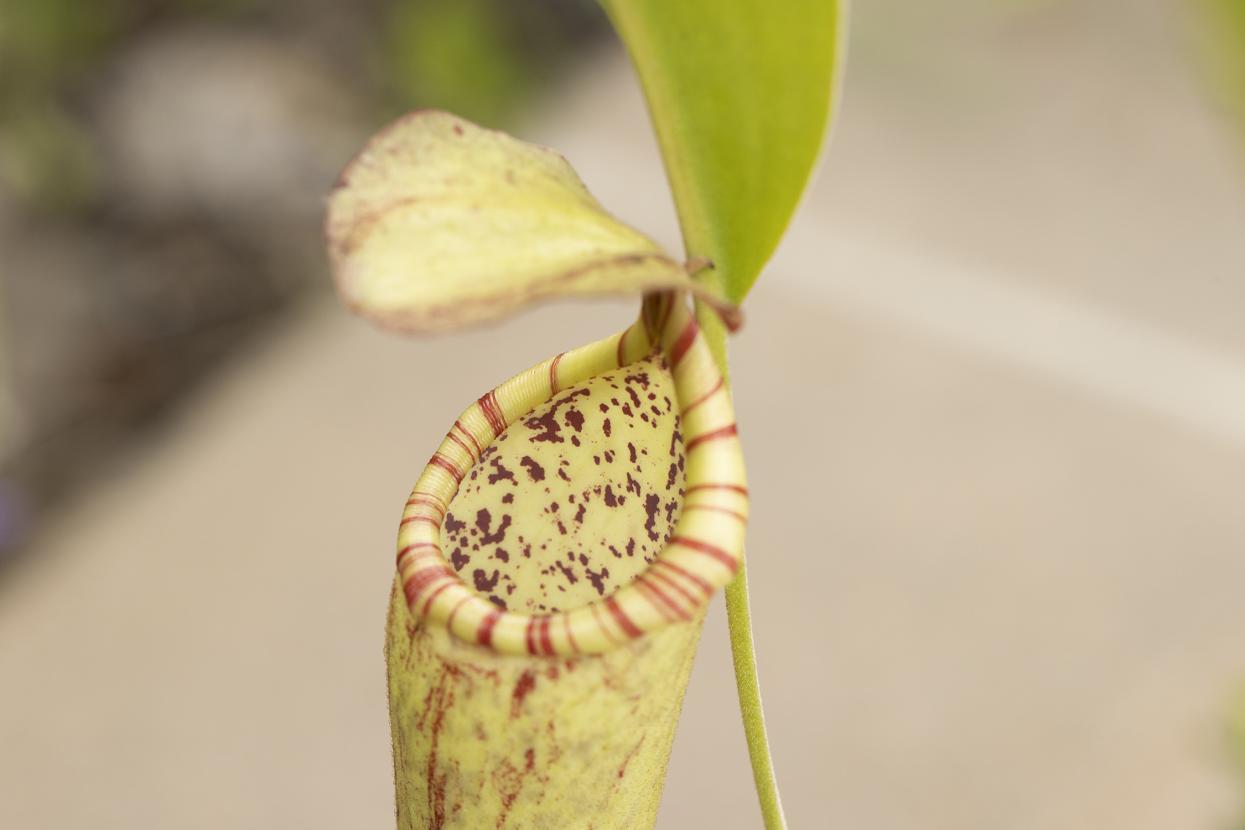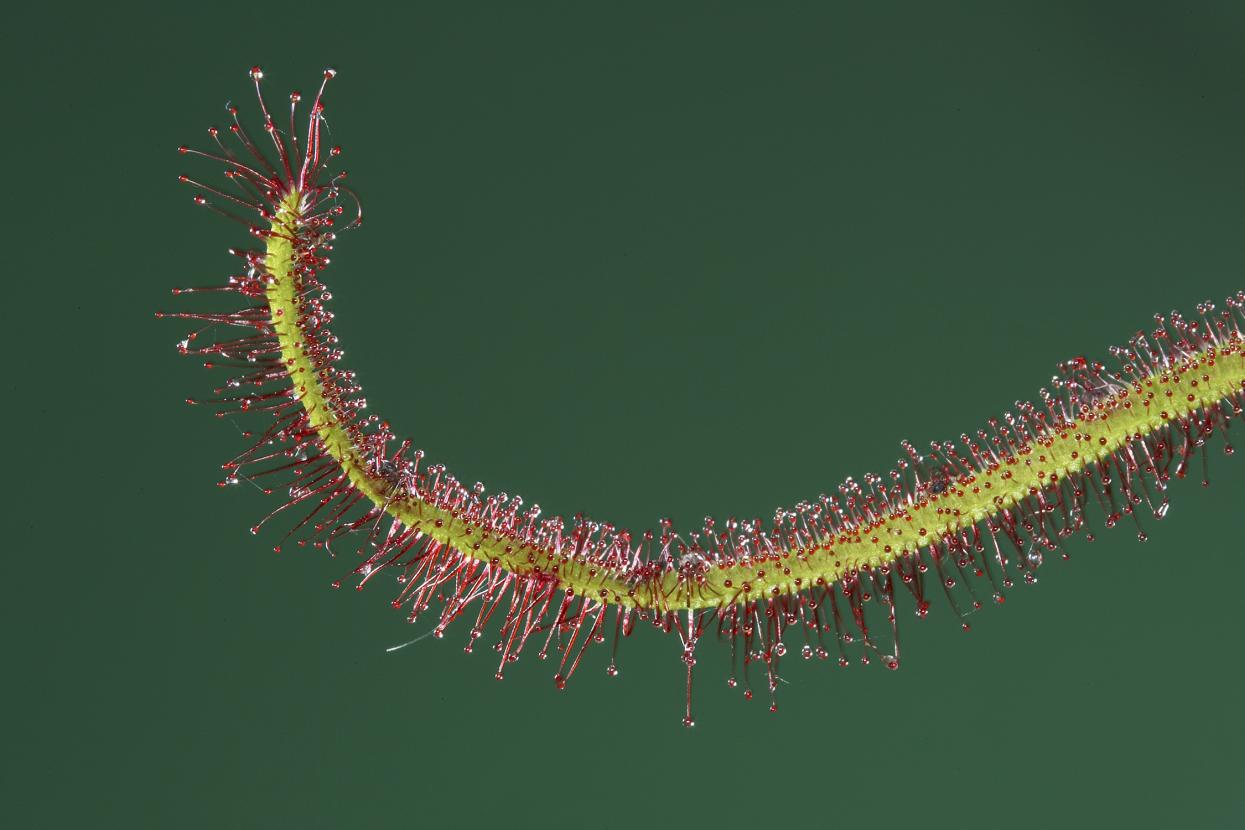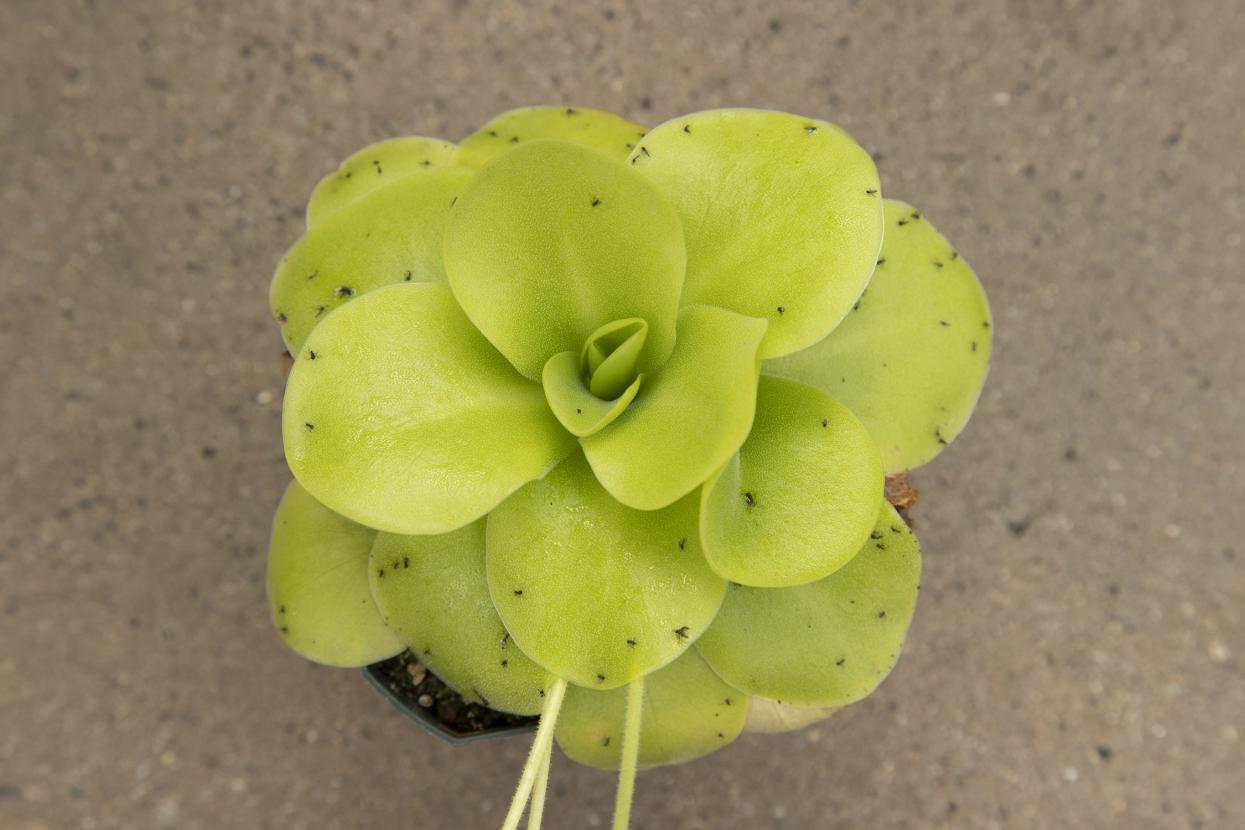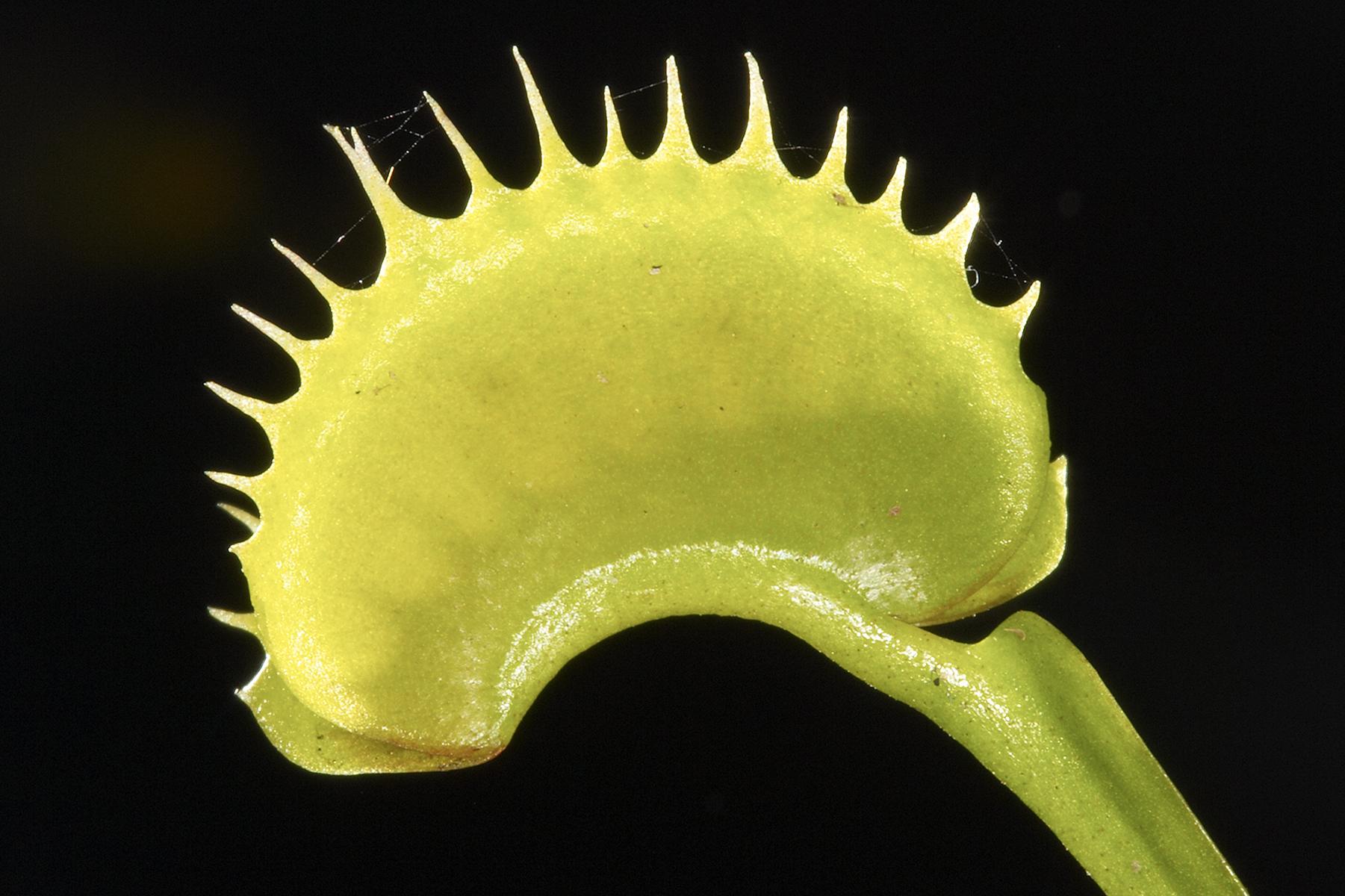
They’re the perfect hunters: patient, alluring, and astonishingly efficient killers. They wait for their next victim to come to them, incapacitate their unsuspecting prey, and then consume them—all while firmly rooted in one spot. Found on every continent except Antarctica, carnivorous plants are at home in a variety of ecosystems across the globe.
A Botanical Hunting Ground
Carnivorous plants typically grow in acidic, poor-quality soils. But unlike other plants, their roots don’t supply food, they merely draw in water and anchor the plant in place. These unique flora have adapted to get vital nutrients by whatever means necessary, which for them is consuming meat. Sundews, pitcher plants, Venus fly-traps, butterworts, and other meat-eating species have perfected luring, trapping, and digesting insects and other small animals. The most common prey for carnivorous plants includes small insects, such as gnats, flies, bees, moths, beetles, and ants, although animals as large as frogs, lizards, and small rodents have been found in their traps!
Lethally Alluring
There’s a number of allures in carnivorous plants’ bag of bug-grabbing tricks. They produce flowers in the spring to ensure pollination by the first insect visitors, then produce leaves to collect those that follow. To draw prey close enough to catch, the plants lure them with bright colors and a variety of sweet or sour scents. From slippery, flaky surfaces and adhesive liquids to leaves that snap shut, these plants use a variety of techniques to trap their victims. After their prey is secured right where they want them, digestive enzymes go to work on their hard-earned meal.
Venus flytraps are native to a 100-square-mile range in North and South Carolina.
A Tasty, Trapped Treat
The Venus flytrap is considered a snap trap. When an insect lands to enjoy the plant’s sweet nectar, they brush against tiny trigger hairs that cause the leaves to quickly clasp around its prey. Once the trap is tightly closed, digestive acids and enzymes dissolve the meal, and the plant absorbs the nutrient-rich “soup.” Seven to 10 days later, the trap opens, and the Venus flytrap is ready to “eat” again. But their abilities are limited. Each trap has enough energy to catch up to seven bugs before it dies off. Then the cycle starts again as another grows to replace it.
Color, nectar, and a delicious scent lure insects into this plant's pitfall trap.
Pitcher Perfect
Pitcher plants use a lethal combination of color, nectar, and potent elixir to attract, disable, and consume their prey. American and tropical pitcher plants share a similar feeding strategy: bright colors and sweet nectar lure in their prey. A powerful drug in the nectar incapacitates the insect, which begins sliding down the slippery, downward-pointing hairs within the pitcher. The weakened insect falls into the digestive acids and enzymes in the bottom chamber, where its nutrient-rich body is absorbed by the plant.
Sundew flowers are raised high above the plant and bloom profusely during the spring and summer. Some sundews are even self-pollinating.
Here Comes the Sun(dew)
Sundews are aptly named. On first glance, it looks like the sun is glistening off a dew-covered flower with bright, colorful nectar and shimmering tentacles. But don’t be fooled. The dew is really a sweet, sticky substance that attracts and then adheres unsuspecting insects to its leaves. The prey struggles to free itself, causing the plant’s tentacles to produce digestive acids and enzymes and—you guessed it—dissolve the nutritious meal.
This sticky trap has a glue-like substance on its leaves that traps prey in place.
It's a Trap
Butterworts are found in frigid and warm climates across the Northern Hemisphere, from the Arctic Circle to Mexico. They are known as “Velcro plants” because of the adhesive dots that cover the surface of their succulent leave; these tiny glands secrete nectar and trap prey, typically small insects. Butterworts operate like other carnivorous plants, responding to a trapped insect’s attempts to free itself by producing digestive enzymes and acids to dissolve them.
Across the globe, there are more than 800 species of carnivorous plants, and they’ve fascinated us for as long as people have understood their unique adaptations. But unfortunately, due to increased habitat loss and poaching, many of these species are endangered and at risk of disappearing. We can all help save and protect carnivorous plants by doing a few simple things: stay on the designated path during hikes, leave them in their native habitats, and only buy them from reputable sources. Together we can keep the future green for these feasting floras.
On your next visit to the San Diego Zoo, lure your loved ones into the Carnivorous Plant Greenhouse to marvel at these masters of adaptation.

